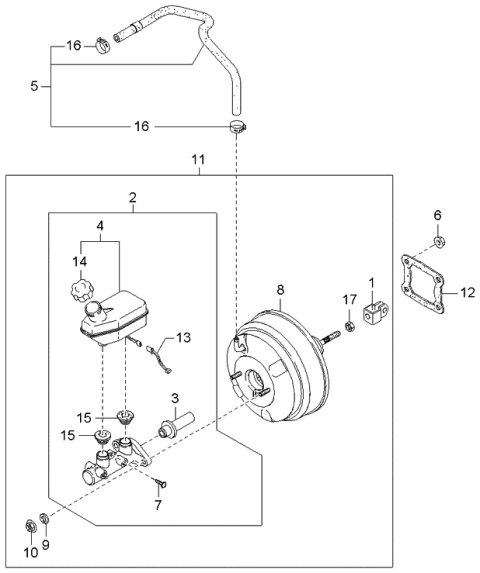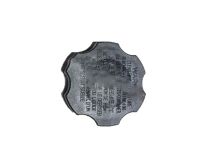Brake fluid can quickly damage paint, so it's important to cover all body parts and avoid spills during the following procedures. Immediately wipe up any spilled fluid and flush the area with water. The Brake Master Cylinder is located in the engine compartment, mounted to the power brake booster. For models from 2005 or earlier, remove the battery; for 2006 or later, remove the air filter housing. With the engine off, pump the brake pedal several times to relieve the vacuum reserve in the power brake booster, preventing contaminants from entering when the cylinder is removed. Use a syringe to remove and properly dispose of the brake fluid from the Brake Master Cylinder reservoir, then disconnect the brake fluid level switch connector and move the harness aside. Place rags under the fluid fittings and prepare caps or plastic bags for the ends of the lines after disconnection. Loosen the fittings at the brake lines entering the Brake Master Cylinder, pull the lines slightly away, and quickly plug the ends to avoid contamination. Clean the area where the Brake Master Cylinder mounts, remove the nuts attaching it to the power booster, and carefully pull the Brake Master Cylinder out, avoiding fluid spills. If needed, remove the reservoir mounting screw and transfer the old reservoir to the new Brake Master Cylinder, ensuring new seals are installed. Before installation, bench bleed the new Brake Master Cylinder by clamping it in a vise and attaching bleeder tubes to the outlet ports. Fill the reservoir with the recommended brake fluid and slowly push the pistons into the Brake Master Cylinder to expel air into the reservoir. Repeat until no air bubbles are present, then remove the bleed tubes and install plugs in the open ports, followed by the reservoir cap. Install a new vacuum seal on the Brake Master Cylinder where it meets the power booster, then mount the Brake Master Cylinder over the studs and tighten the nuts finger tight. Carefully thread the brake line fittings into the Brake Master Cylinder, ensuring not to strip the threads, then fully tighten the mounting nuts and brake line fittings to the specified torque. Fill the Brake Master Cylinder reservoir with fluid and bleed the Brake Master Cylinder and brake system by having an assistant depress the brake pedal while loosening the fitting to allow air and fluid to escape, repeating until the fluid is clear of air bubbles. Have plenty of rags on hand to catch any fluid, as brake fluid can ruin painted surfaces, and rinse the area under the Brake Master Cylinder thoroughly with clean water after bleeding. Finally, test the operation of the brake system carefully before returning the vehicle to normal service.
Posted by KiaPartsNow Specialist 







